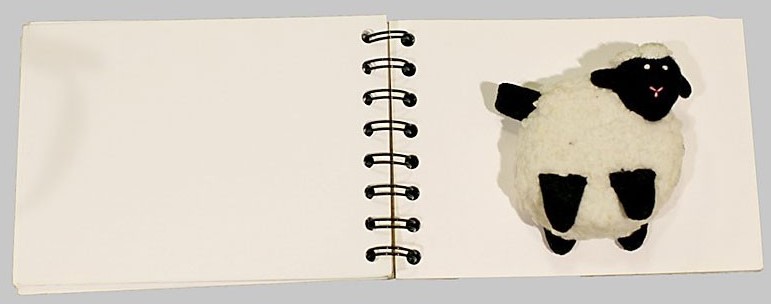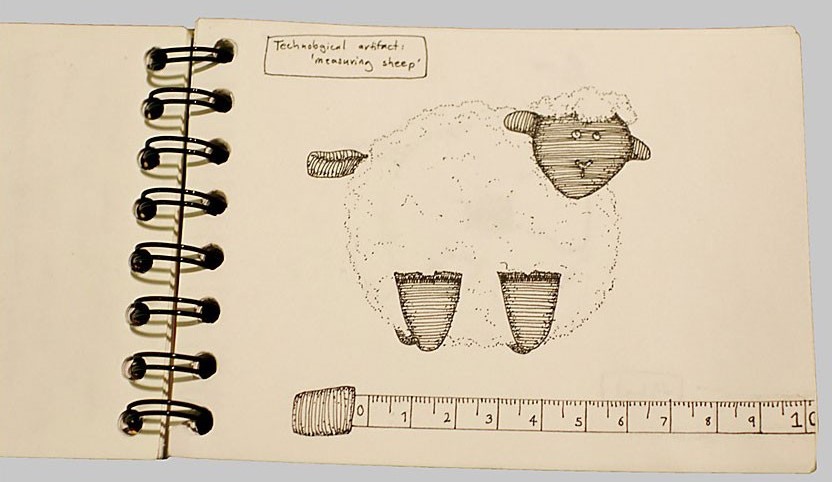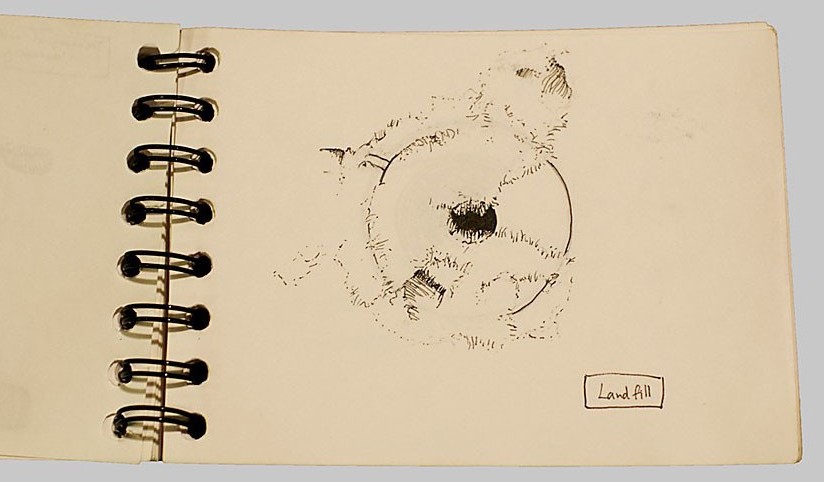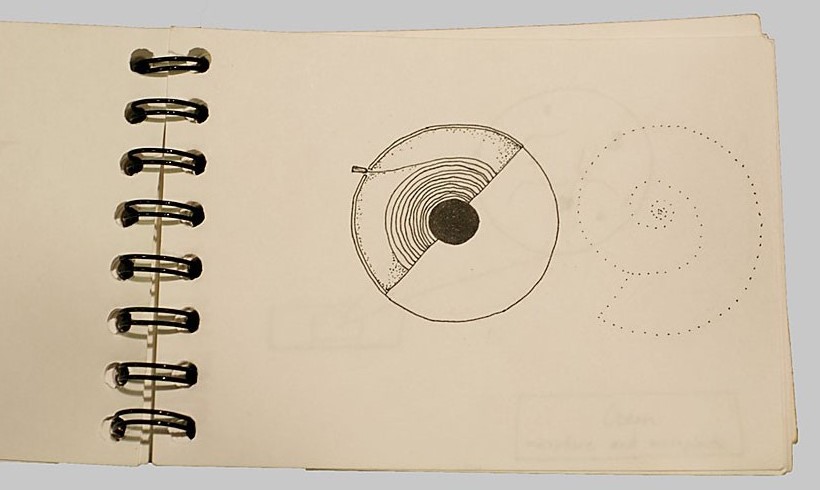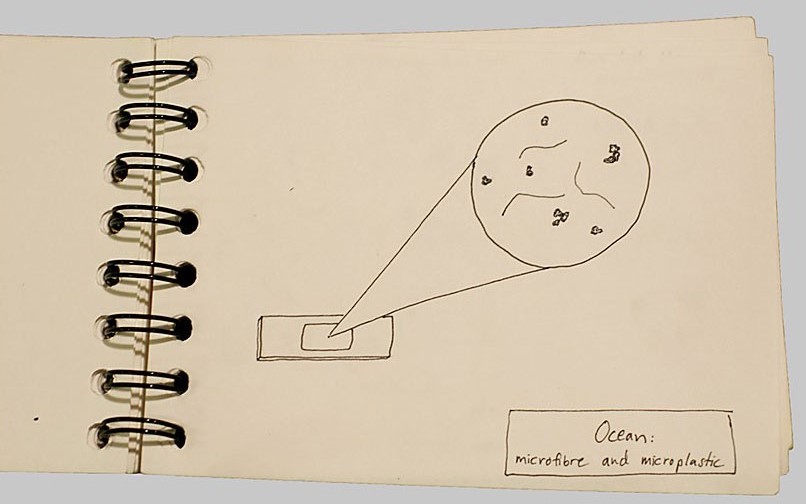Technostratigraphy of a technological object
The Stratigrapher’s Tape
This is a tape measure cleverly disguised as a sheep. Pulling the tail reveals the many centimeters coiled within, which whip back when you squeeze its belly—at once a soft toy and a tool. It was a gift from my mother, an avid knitter, because I also love to knit. As a measuring instrument, it helps me follow patterns and make sure that the vest for my boyfriend is not too tight and the hat for my niece is not too loose.
While deceptively fluffy, this is a plastic sheep. It is both deeply personal and mass-produced (although the sheep must have been sewn by hand). Soft synthetic fibers enclose the hard plastic casing and tape measure. It will be around long after I, and those I love, have lost our animate forms. Yet, given time, even plastic will break down, although it will not decompose. If it breaks and ends up in a landfill, what might it look like several decades from now, or in half a century? If it is washed out to sea, what will be left of it after a hundred years of the persistent forces of waves and sunlight? In truth, I have no idea. I do not know the chemistry of decay, nor the exact make-up of this measuring tape. The value of this imaginative exercise, for me, lies elsewhere.
My measuring sheep lends some form to my thoughts about the Anthropocene. The Anthropocene is a big word that is generating many others. It makes me feel a little tired. This measuring tape is the product of greater technological developments, as well as of standardization—standardization that simultaneously enables collaboration, trade, and communication, and feeds into global hegemony and the loss of diversity. Given its material composition, it will outlast me. However, drawing the imagined future of a measuring sheep helps me scale down in time and space; from the caveman’s fire, the steam engine, or nuclear physics, to what my hand holds here and now. And it is in the here and now that I can think, act, and knit a few more rows.
